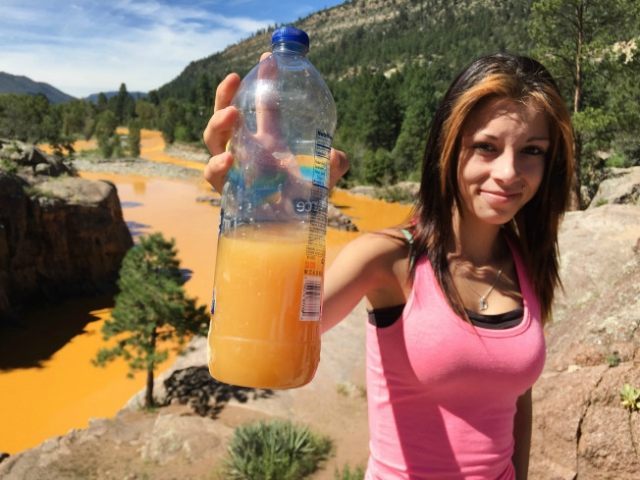On July 30, a local Colorado newspaper called the Silverton Standard & the Miner published an op-ed by a concerned geologist which seems, at first glance, to have anticipated the EPA-caused disaster which made national news a week later.
Looking closely at the letter, it appears the actual disaster was much worse than the op-ed predicted, but the author was right about some of the factors (and results) mentioned in the letter.
Mark Esper, the editor of the Silverton Standard, clarified on Wednesday that the op-ed in question is real and was published by his paper on July 30th. It reads in part:
I came to Silverton this summer to enjoy my retirement, appreciate nature and prospect the mountains for unique minerals. I came here to enjoy a simple life with no TV and no politics, but unfortunately that has changed. Your EPA dilemma has caused my blood to boil.
Based on my 47 years experience as a professional geologist, it appears to me that EPA is setting your own and the area up for a possible Superfund blitzkrieg…
Here’s the scenario that will occur based on my experience:
Following the plugging the exfiltrating water will be retained behind the bulkheads, accumulating at a rate of approximately 500 gallons per minute. As the water backs up, it will begin filling all connected mine workings and bedrock voids and fractures. As the water level inside the workings continues to rise, it will accumulate head pressure at a rate of 1 PSI per each 2.31 feet of vertical rise. As the water continues to migrate through and fill interconnected workings, the pressure will increase. Eventually, without a doubt. The water will find a way out and will exfiltrate uncontrollably through connected abandoned shafts, drifts, raises, fractures and possibly from talus on the hillsides. Initially it will appear that the miracle fix is working.
“Hallelujah!”
But make no mistake, withing 7 to 120 days all of the 500 gpm flow will return to Cement Creek. Contamination may actually increase due to disturbance and flushing action within the workings.
What the op-ed predicted was that the plan to plug the mine would fail as water backed up and eventually began leaking right back into the river, possibly through loose rocks on the hillside. Note that the 500 gpm flow the author predicts will eventually return to the creek is the same flow that was coming out of the mine prior to the attempt to plug it. So this isn’t the prediction of a catastrophic release. Rather, he seems to be saying the same amount of water will end up in the creek eventually.
What actually happened was worse than the letter’s author predicted. Last Wednesday, EPA workers were reportedly using heavy equipment in an effort to insert a pipe which could be used to pump water out of a mine for treatment. Instead, workers accidentally collapsed part of the mine entrance, sending 3 million gallons of contaminated water directly into the river.
The op-ed may not have predicted the disaster, but it did foresee the general nature of the problem the EPA was dealing with. As already mentioned, the EPA was attempting to plug the 500 gpm flow of water coming from the Red and Bonita mines. But as the op-ed predicted, that would necessarily cause water to back up into other nearby mines. The EPA was attempting to stabilize one of those other mines, the Gold King mine upstream, when the disaster took place.
And that leads to another factor mentioned in the op-ed which also came into play last week. According to USA Today, “an EPA team working at the mine on Wednesday underestimated how much pressure was hidden behind the debris that plugged the mine’s entrance.” So, failure to account for the water pressure played a role in the release.
The op-ed did touch on some actual dangers the EPA was dealing with. It may even have proven to be ultimately accurate if the EPA hadn’t accidentally caused the huge release of water with heavy equipment last week. As it is, we’ll never know what the result would have been if that hadn’t happened.
Finally, the letter’s author goes on to suggest, absent any real evidence, that all of this was part of a “hidden agenda” by the EPA to turn the area into a Superfund site, something the state has resisted because of the potential impact on tourism and trade.
For the record, the EPA has denied there was anything intentional about the release of contaminated water. At a public meeting held after the spill, EPA’s regional administrator Shaun McGrath said, “This was not intentional, obviously. The EPA was out doing this work to try to address what is an ongoing problem.” He added, “In terms of why it happened, we are doing a complete look back at that to try an understand it.” McGrath promised to hold people accountable in the same way the EPA would respond to a similar disaster caused by anyone else. So far, no one at the EPA has been fired or disciplined.

COMMENTS
Please let us know if you're having issues with commenting.